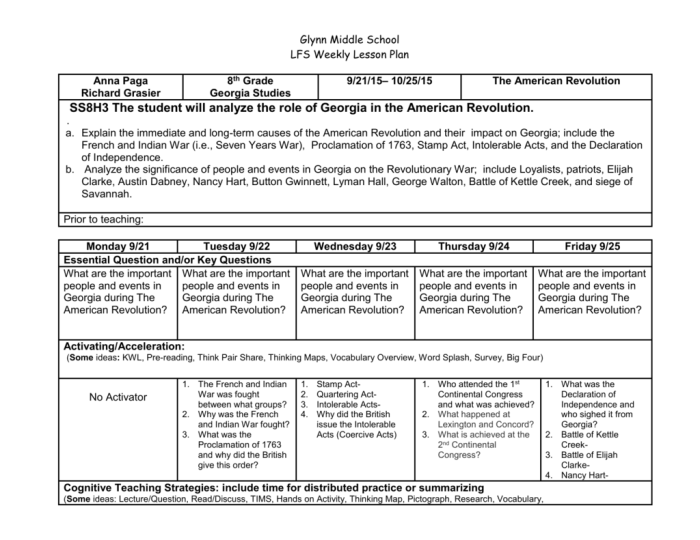Unit 5: American Revolution Inquiry Lesson delves into the intricate historical narrative of the American Revolution, inviting learners to explore the political, economic, and social factors that ignited the flames of rebellion. Through an immersive journey, this lesson unravels the key events, influential figures, and transformative ideas that shaped the course of American history.
As we embark on this historical odyssey, we will dissect the Declaration of Independence, examining its profound arguments and its enduring impact on American identity. We will delve into the pivotal battles and campaigns of the War for Independence, analyzing the strategies and tactics employed by both sides.
Finally, we will scrutinize the Treaty of Paris, its terms, and its far-reaching consequences for the United States and Great Britain.
Historical Context: Unit 5: American Revolution Inquiry Lesson

The American Revolution was a complex event with deep roots in the political, economic, and social conditions of the American colonies in the 18th century. Key factors that contributed to the Revolution include:
- Political tensions between the American colonists and the British government, particularly over issues of taxation and representation.
- Economic grievances, such as the British government’s mercantilist policies that restricted colonial trade and industry.
- Social and cultural differences between the American colonists and the British ruling class, leading to a growing sense of American identity and independence.
The following timeline provides an overview of key events leading up to the Revolution:
- 1763: Proclamation of 1763 restricts colonial expansion westward.
- 1765: Stamp Act imposed on the colonies, sparking widespread protests.
- 1770: Boston Massacre occurs, further escalating tensions between colonists and British troops.
- 1773: Boston Tea Party protests British tea tax.
- 1774: First Continental Congress convenes in Philadelphia to coordinate colonial resistance.
- 1775: Battles of Lexington and Concord mark the beginning of the American Revolutionary War.
Key figures in the American Revolution include George Washington, who served as commander-in-chief of the Continental Army; Thomas Jefferson, who drafted the Declaration of Independence; and Benjamin Franklin, who played a crucial role in securing foreign aid for the American cause.
Question & Answer Hub
What were the major causes of the American Revolution?
The American Revolution was sparked by a complex interplay of political, economic, and social grievances against British rule, including taxation without representation, restrictions on trade, and the denial of basic rights.
Who were some of the key figures in the American Revolution?
George Washington led the Continental Army, Thomas Jefferson drafted the Declaration of Independence, and Benjamin Franklin secured critical foreign aid from France.
What was the significance of the Treaty of Paris?
The Treaty of Paris, signed in 1783, formally ended the American Revolutionary War and recognized the independence of the United States.



